
Peter & Paul Had Wives?
“When Jesus came into Peter’s house, he saw Peter’s mother-in-law lying in bed with a fever.” Matthew 8:14-15
This is the first reference we are given concerning a disciple having been married. It has been assumed that when Jesus appointed a person to follow Him, they immediately dropped what they were doing and, with the clothes they were wearing and not a word to their family, began to follow Him never looking back. But as the old adage goes, never say never. This was not the case nor does scripture say this ever was the case. Those that Jesus appointed did immediately follow him (Luke 5: 27-28; Luke 18:28-30). And eventually they all gave up their previous occupations to focus solely on spreading the Gospel even to the point of being martyred. But there can be no doubt that some of these men were married and all of them without exception kept in touch with their families and friends. They could easily have accomplished this in a number of ways.
First, all these men had extended families living throughout Israel. So, as they followed Jesus, they would have regularly met and talked with a sibling, uncle, cousin or friend in various towns and villages. A second way they could keep in touch was by mail. Yes, there was a crude slow mail system that, for a small fee, allowed a letter to eventually be delivered. The third and most convenient way the disciples regularly met with their families and friends was during the seven annual feasts of Judaism held in Jerusalem. Jesus was fully under the Law and as a healthy male, He was required by Law to attend the three Spring feasts which consist of Passover, Unleavened Bread and First Fruits. He was also required to attend the late Spring Feast of Pentecost and the last three Fall Feasts of Trumpets, Yom Kipper and Sukkot or Feast of Tabernacles. These last three feasts are commonly referred to as Rosh Hashanah.
Peter obviously could not have had a mother-in-law without first being married. This citing concerning Peter's in-law is recorded in three of the Gospels (Matthew 8:14-16: Mark 1:29-34; Luke 4:38-41). Paul gives us yet another glimpse into the private lives of the disciples. He writes that other apostles, Jesus’ brothers and Peter all had wives and occasionally took them with them on their missionary trips (I Corinthians 9:5). This fact has been overlooked in Scripture for three reasons. First, the women are usually not named, instead they are only briefly referenced in passing. Secondly, there was a general bias against listing ancillary names of both men and women in Scripture as they would become inflated by way of their association with Christ. Thus, there are only forty nine women whose names appear in the Bible which represents 7% of total names listed. And a final reason for excluding women is thought to be that, as the number of specific personalities are entered into the Gospel story, the more the focus will shift from Jesus to his followers who were not pivotal to the ministry. It was because of this reasoning that even the authors of the Gospels refused to take credit for their writings by omitting their names on their manuscripts. The names attached to the Gospels were assigned based on oral traditions of the early church. But, now we know that Peter had a wife whose mother was living with them probably due to the fact that she was a widow.
Next, the question has been raised as to whether or not Peter’s wife may have died before or during Peter’s discipleship with Jesus. This is because Scripture does not state that Peter’s wife asked Jesus to heal her mother. Nor does it mention Peter’s wife helping her mother fix dinner (Matthew 8:14-15). But, it is a stretch to assume that these omissions precludes Peter’s wife from being present at the healing and later attending the dinner. The focus of the event was on the instantaneous healing of the mother which did not involve Peter’s wife. It would seem that this line of reasoning is possibly a way to conclude that Peter was single at this time. Therefore, he was not a docile husband and family man living a domesticated lifestyle but the headstrong, seafaring, free spirit that we have come to picture him as. However, it turns out, he was in fact married during his entire time as a disciple and later an apostle. And, according to the early Church Father Clement of Alexandria, he also had children (Stromata, III, vi ed. Dindorf, II, 276). In fact, we know from further writings by Clement that the couple worked together spreading the Gospel right up to the day they were both martyred.

Clement was a highly respected theologian, philosopher and early Church Father (150 A.D.- 215 A.D.) He wrote, “They say accordingly {to oral tradition}, that the blessed Peter, on seeing his wife led away to her execution, rejoiced on account {because} of her summons {call} and conveyance {return} home {heaven} and cried {called out to her} in a very encouraging and comforting voice, addressing her by her name: Remember you {focus on}, the Lord!” Such was the marriage of these blessed ones, and such was their perfect affection towards there dearest friends.” (Clement, The Stromateus, Book VII) Peter called out to his wife by name and one day, we will know the name of this remarkable woman who was possibly the first female to spread the Gospel and be martyred. Rome allowed women the opportunity to recant certain crimes and be pardoned. Peter’s wife apparently refused to renounce her faith and was executed for sedition against the Roman state. Peter was tried, convicted and crucified later that same day.

Another early Church Father was Eusebius of Caesarea who was a noted Greek historian and Church Bishop (260 A.D.-339 A.D.) He wrote concerning the apostles having wives and families by stating, “Clement indeed, whose words we have just quoted, after the above mentioned facts gives a statement, on account of those who rejected marriage, of the apostles{plural} that had wives. “Or will they,” says he, “reject even the apostles? For Peter and Philip beget children; and Philip also gave his daughters in marriage. And Paul does not hesitate, in one of his epistles, to greet his wife, whom he did not take about with him, that he might not be inconvenienced in his ministry,” (Eusebius, Church History III.31).
Eusebius' statement concerning Paul would seem at first glance to be unscriptural as Paul is thought, by some scholars, to have suggested that he was unmarried (I Corinthians 8:8). There is a debate as to whether Paul was or was not married. Some believe he must have been married because he was a member of the Sanhedrin. However, this requirement to be married in order to be a member of the Sanhedrin was not initiated until after the first century. But we do know that Paul came from the prominent metropolitan city of Tarsus. We know that he came from a wealthy family that had acquired by way of service to Rome or through payment, Roman citizenship. We know that Paul was sent to Jerusalem to study the Torah under the tutorship of the renowned Rabbi Gamaliel (Acts 22:1-3). We know that Paul had his own successful business that seems to have involved the dying of cloth used in the manufacturing of tents and possibly the tallit or Jewish prayer shawl (Acts 18:1-3). We know that he had direct access to the Temple’s Chief Priests and most probably the High Priest (Acts 9:1-2). This means that Paul would have followed Jewish tradition and married in his late teens or early twenties. If this was the case, he would have no doubt started a family. In fact, he may have fathered and referenced a son named Marcus {Mark} in one of his letters (I Peter 5:13). However, he may have been referencing his young close assistant John Mark. Some scholars believe that it was John Mark who transcribed the remembrances of Peter concerning the ministry of Jesus. Then, because it was known that John Mark wrote the text, the document was credited to him and so became known as the Gospel according to Mark.

Also to be considered concerning Paul’s marital status was the fact that life was extremely hard in the first century. The vast majority of people lived literally day to day in abject poverty. Accidents, disease, starvation and childbirth were all major issues for people, especially women and children. It could very well have been that Paul was once married but his wife died of natural causes. And this loss would have allowed Paul to pursue his new found passion defending the purity of the Jewish religion against blasphemers. Paul was now in his thirties, financially well set and aggravated to the point of physical violence concerning the growing Jesus as Messiah movement. If his wife had died, He may have decided not to remarry but instead dedicate his life to one of apprehending, trying and executing Christians. We know that these Christians Paul sought to arrest and execute consisted of both men and women (Acts 8:3). So, Paul was either a widower, or he was married and his wife witnessed him gyrate from being a man of faith in the Torah, to a fanatical prosecutor of Christians, to a devoted Christian. Thus, his wife may have divorced him, or she simply lived quietly at home waiting for his return from missionary trips. This second possibility seems to be most likely and why Eusebius states that he was married but did not always take his wife with him on long dangerous missionary trips.
Paul’s wife was no doubt brought up in the Jewish tradition. But we know that when Paul turned his considerable intellect on deconstructing the Old Testament as it concerns the Messiah, he was a conversion powerhouse to be reckoned with. So, he would have surely converted her as he did with tens of thousands of Jew and gentiles. This then would explain why Paul was able to write, “Do we not have the right to take along a believing sister or wife, as do the other apostles and the brothers of the Lord and Cephas {Peter}?” (I Corinthians 9:5) Therefore, according to Paul, he had the support of his wife as did Peter and both men traveled with them as they spread the Gospel. Paul went to Asia Minor or modern day Turkey and Peter to the Black Sea region (I Peter 1:1). So, while these women may have been in the shadows, they were none the less alongside and supporting the ministries of their husbands.
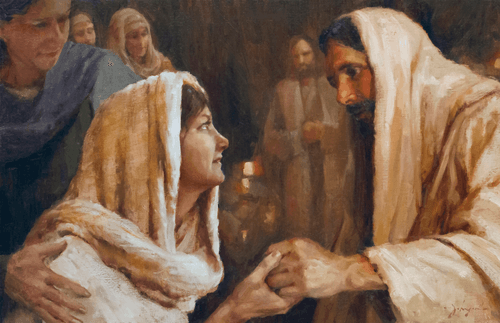
As for Peter’s wife, it appears she was a convert for a number of reasons. First, her mother may have had a virus that she knew would result in her death. Because Peter was the owner of a prosperous family fishing business and lived in a major city, they had no doubt consulted with doctors concerning her condition which involved a high fever. Peter’s home has been definitively located and excavated in Capernaum. While it was expanded in the late first century to serve as a church, its original construction footprint was still large. So Peter had the money necessary to bring in Jewish doctors yet the elderly woman remained very ill. She was lying in her bed with probably her daughter at her side when Jesus walked into the room, simply touched her on the hand and she was instantly healed (Matthew 8:14). Next, Peter’s wife witnessed her house quickly becoming surrounded by hundreds of strangers pleading for Jesus to continue preaching and healing. There were people crowding at the door, peering in the windows and even on the roof. Several men actually tore a hole in her roof and lowered a paralyzed man down into her home (Mark 2:1-5; Luke 5:17-20). She then eyewitnesses Jesus instantly healing the man. This would have been more than enough proof to cause her to accept Peter’s belief that Jesus was the Messiah.
Peter knew his ultimate fate as Jesus had prophesied it to him years earlier (John 21:18). He had no doubt told this prophecy to his wife. One of his last letters written only a year or less before his execution was on the topic of virtuous women. He was literally extolling the virtues of his wife. But figuratively, he was extolling the virtues of all wives who love, cherish and support their husbands through the good times and bad. He also encouraged those women who, in some cases, were working to bring the words of Christ to their husbands. In this way, they too could enjoy living a life to the fullest and in death, experience eternal life.
Oral tradition states that after more than twenty years of evangelizing, Peter and his wife began preaching in Rome. There is no reason given in scripture as to why Peter went to Rome. Tradition states that he went there as he was destined to die there (John 21:18). Unfortunately, it was there that he and his wife caught the notice of Emperor Nero.

By this time, Nero’s cognitive disorders had deteriorated to the point where he was mentally insane. It is believed that he ordered a neighborhood of homes immediately adjacent to his property to be secretly set on fire so he could extend his private gardens. The fire quickly spread out of control and became known as the Great Fire of Rome. He then started a false rumor that Christians had intentionally set the fire. He had come to believe that the Roman gods were mad at him because they were being replaced by the God of the Christian. So, he decided that his mental and political problems could be resolved through the elimination of the Christian movement. This time period is known as the Neronian Persecution at Rome. He ordered the arrest of all Christian leaders, converts and sympathizers and had them tortured in diabolically sadistic ways. Some he had publicly eaten alive by wild animals in the Coliseum. Others he had puts on stakes, then covered in tar and set on fire as a way to light his gardens at night.
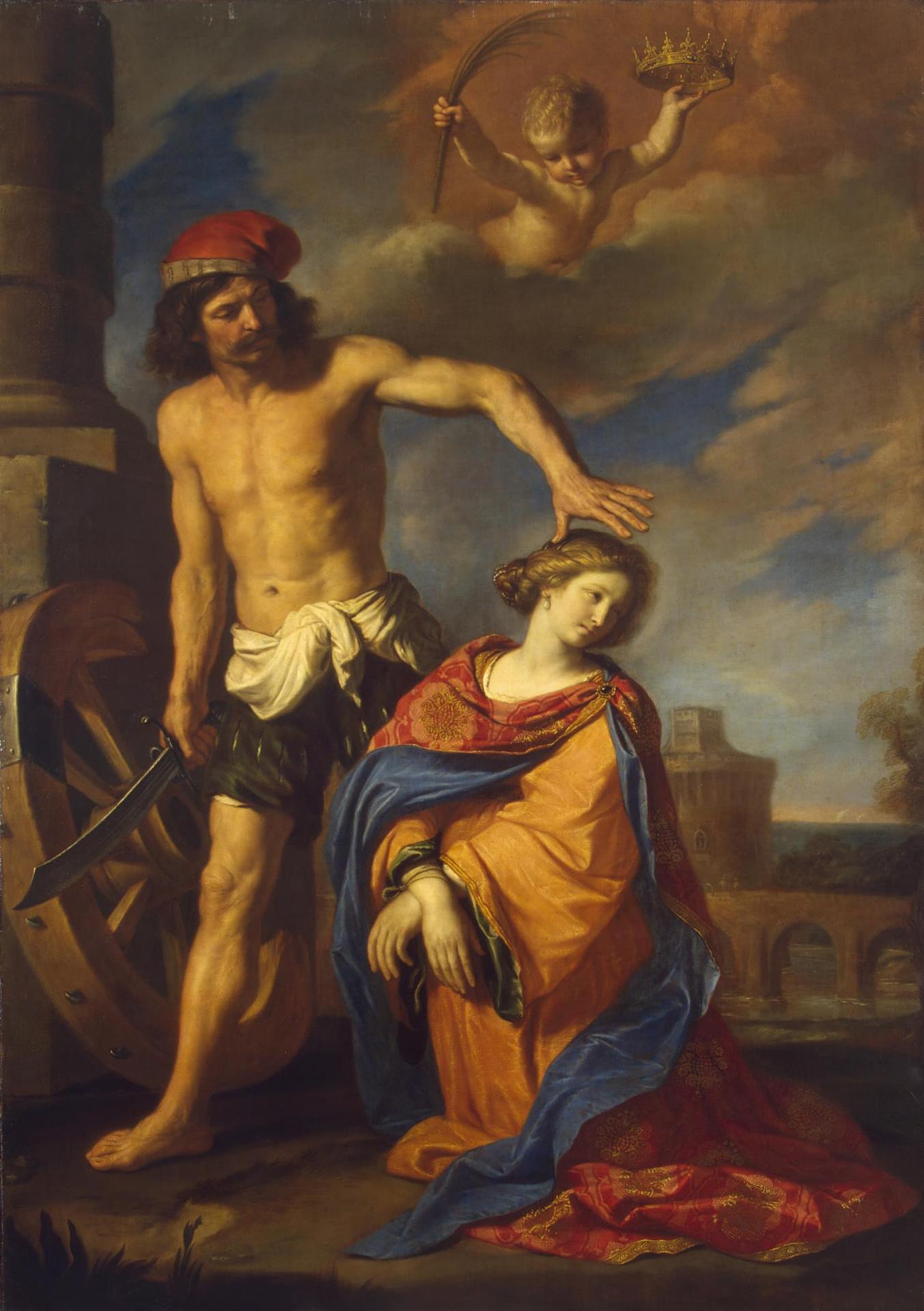
He had Peter and his wife arrested, tried, convicted and sentenced to death. His wife was taken to be executed first. Nero wanted Peter to watch his wife as she walked to her execution. It may very well have been that Nero ordered her to be executed in front of Peter. It was at this time that, as she passed Peter, he called out to her “focus on the Lord”. Nero sentenced Peter to be crucified just as Jesus had prophesied to him many years earlier. Nero, knowing how respected Peter was to his followers, ordered his crucifixion to take place privately in his garden. Crucifixion was the most lengthy and excruciating way to die. In fact, the word 'excruciate' come from the word crucifixion. Because Peter already knew he would be crucified, and believing that he was not worthy to die the same way Jesus died, he requested to be crucified upside down.
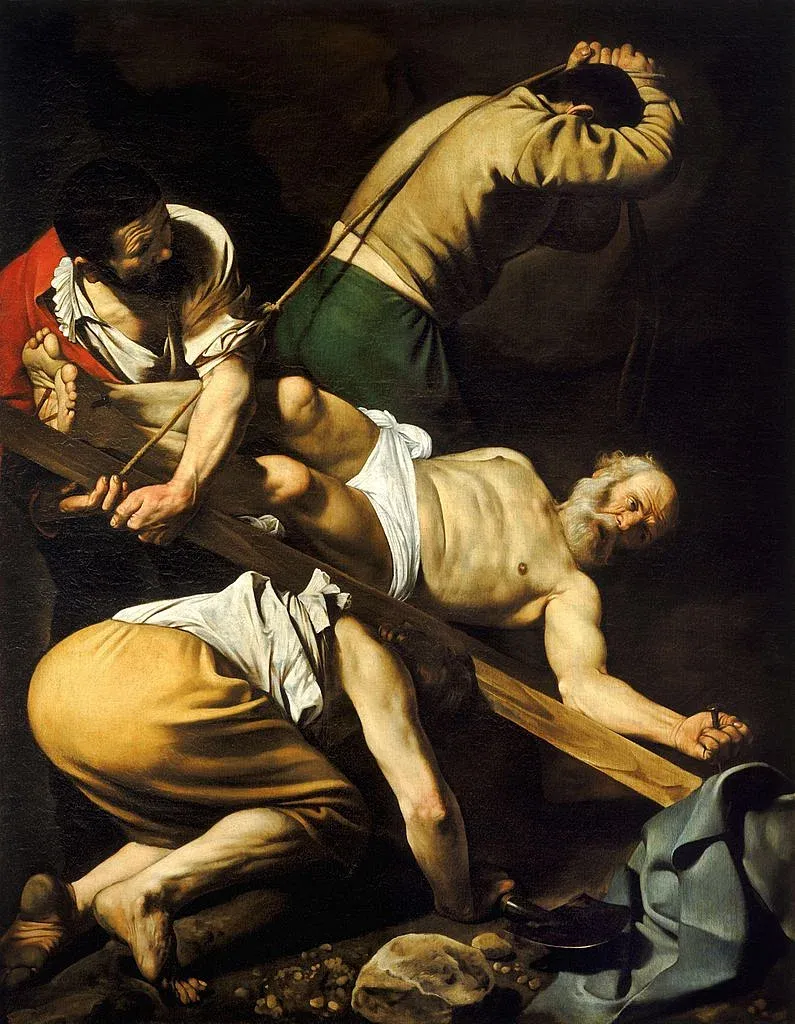
All these additional details concerning the personal and private lives of the apostles gives us a more dynamic picture of them as real men who lived, loved, married, had families and yet willingly chose to die for a just cause. We know that Peter and Paul had wives that supported their decisions to turn their backs on lucrative family businesses and instead follow Christ. They continued to love and support their husbands even when they were shunned by the Jewish community and were apart for weeks and months at a time. They were passionate about their husbands, their mission and about Jesus. These couples loved each other until the very end when one or both were executed for their faith. Peter cried out to his wife by name as she was bound and taken to the place of her execution. He loved her, was proud of her and knew for certain they would soon be together again. Peter’s unnamed wife was a true hero of faith.
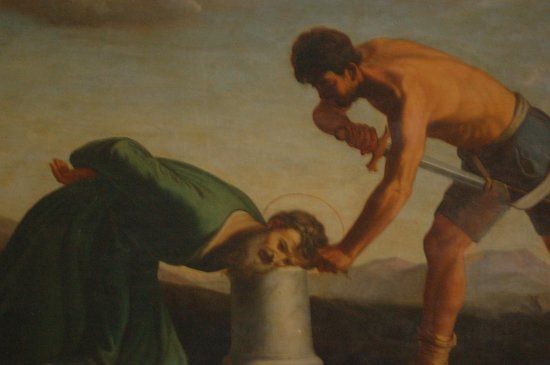
Tradition tells us that while Paul was executed the same day as Peter and his wife, they were not executed in the same location. “ …Paul was led to the place of execution by three soldiers… When they arrived at the Ostia Gate, near where he was to suffer,… he faced the East, raised his hands to heaven, prayed for a long time in Hebrew and gave thanks to God. He knelt on the ground on both knees, bent his neck, and was beheaded. His body was then thrown into a ditch that ran along the road and which contained other previously executed corpses. Tradition states that Luke and Titus located Paul’s body and took it to be properly buried in a borrowed tomb close to the execution site. (The Golden Legend, Translated by William Ryan, Vol. 1, pg.353-354). Emperor Constantine the Great would convert to Christianity, and in 324 A.D. construct large Basilicas over each of these apostles' burial sites.
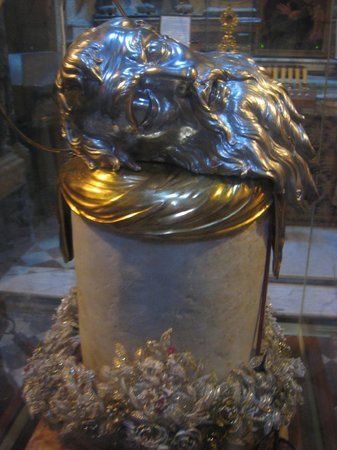
So while it has been assumed that the disciples did not marry because Jesus did not marry, this was not the case. Jesus did not marry as it was not part of His mission here on earth to start a family. It has also been assumed that Catholic priests do not marry because Jesus did not marry. This is also not true. In 1074, Pope Gregory VII wrote an encyclical {an official letter from a Pope sent to all churches} stating that all priests were to practice celibacy. He made this rule for three reasons. First, if a father was a priest, great pressure was often put on the first born son to follow in his father's footsteps and continue the family tradition. Second, boys were being pressured by their families to become priests as it brought great respect to the family in their communities. And third, it was believed that having a priest in the family would curry favor with Christ and insure that the entire family would go to heaven. Because of the encyclical, an unmarried priest would now have no family obligations to distract him from the ministry and no son to pressure into joining the priesthood. Therefore, to become a priest was a deeply personal decision based only on a perceived calling by God. The requirement of celibacy for Catholic priests was reconfirmed during the Council of Trent in 1563.
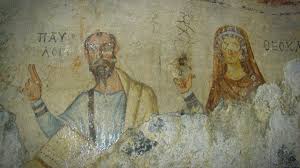
On a closing note, the first Christian woman recorded as being martyred for her faith was named Thecla. She was a young, noble woman engaged to be married when she heard the teachings of Paul. She left her finance to follow him. She was tried and sentenced to be executed on many occasions. But each time she miraculously escaped death. Helena, the mother of Constantine, enshrined her tomb within a monastery.

If you enjoy the information provided on this site, please consider making a donation of any amount to help continue its production. Donate Now